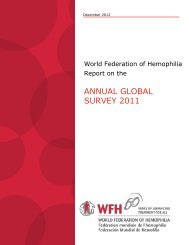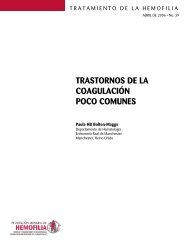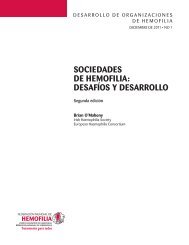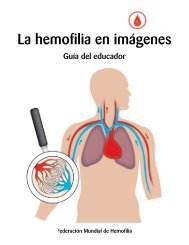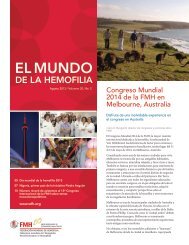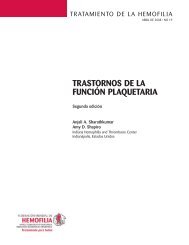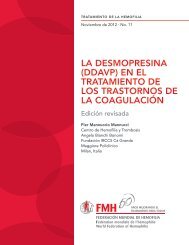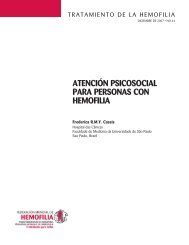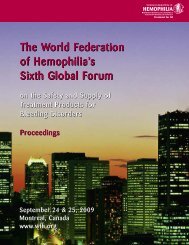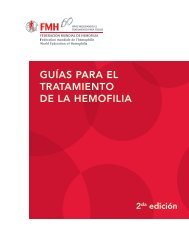Guide for the Assessment of Clotting Factor Concentrates
Guide for the Assessment of Clotting Factor Concentrates
Guide for the Assessment of Clotting Factor Concentrates
You also want an ePaper? Increase the reach of your titles
YUMPU automatically turns print PDFs into web optimized ePapers that Google loves.
SECTION 2LICENSING, REGULATION, AND CONTROL OF CLOTTING FACTORCONCENTRATES IN EUROPE AND NORTH AMERICAIntroductionArrangements <strong>for</strong> <strong>the</strong> licensing, regulation, and control <strong>of</strong> medicinal products have been developedand <strong>for</strong>malized to ensure that <strong>the</strong> risk-to-benefit relationship, which is involved in any medical intervention,may be optimized to assure patient safety. The responsibilities <strong>of</strong> national regulatory authorities(NRAs) under such arrangements include:• Establishing and maintaining a system <strong>of</strong> licensing and control, including- Dossier review and pre-approval inspection- Facility and product registration- Facility and product inspection and en<strong>for</strong>cement• Providing standards and guidelines• Requiring that licence holders adopt and maintain appropriate quality systems• Providing arrangements <strong>for</strong> post-marketing surveillance <strong>of</strong> productsRegulatory systems in Europe and North America are highly evolved and very complex, and arebeyond <strong>the</strong> capacity <strong>of</strong> most healthcare systems in developing countries with limited resources.However, it is beneficial if authorities in developing countries are aware <strong>of</strong> <strong>the</strong> approaches used by <strong>the</strong>main regulatory agencies, which may help <strong>the</strong>m to develop <strong>the</strong>ir own framework <strong>for</strong> assessing andchoosing hemophilia treatment products. The approaches <strong>of</strong> <strong>the</strong> Food and Drug Administration and<strong>the</strong> European Medicines Evaluation Agency (EMEA) are outlined in this section, along with o<strong>the</strong>rapproaches aimed at harmonization.FDA regulations and guidelinesThe U.S. Food and Drug Administration (FDA) is <strong>the</strong> largest regulatory body, with wide responsibilities <strong>for</strong>assuring <strong>the</strong> quality <strong>of</strong> foodstuffs, medicines, and medical devices manufactured <strong>for</strong> sale and supplyin <strong>the</strong> U.S. Regulations to be observed in <strong>the</strong> manufacture and supply <strong>of</strong> pharmaceuticals are definedin Title 21 <strong>of</strong> <strong>the</strong> Code <strong>of</strong> Federal Regulations (21CFR) and in sections 1-999 <strong>of</strong> <strong>the</strong> United StatesPharmacopoeia (USP). The parts <strong>of</strong> 21CFR with specific relevance to plasma products are 5 :• Parts 210 and 211, which describe current good manufacturing practices (cGMPs)• Parts 600 to 680, which set out <strong>the</strong> requirements <strong>for</strong> biological productsAdditional guidance (distinct from regulations) is provided to manufacturers (and inspectors) in arange <strong>of</strong> paper and web-based publications, including:5 Available from http://www.access.gpo.gov<strong>Guide</strong> <strong>for</strong> <strong>the</strong> <strong>Assessment</strong> <strong>of</strong> <strong>Clotting</strong> <strong>Factor</strong> <strong>Concentrates</strong> 13



